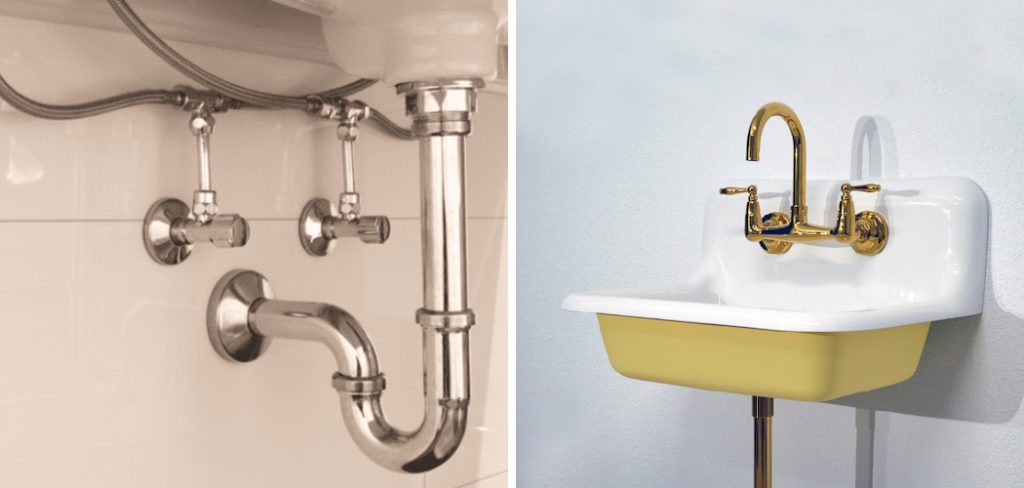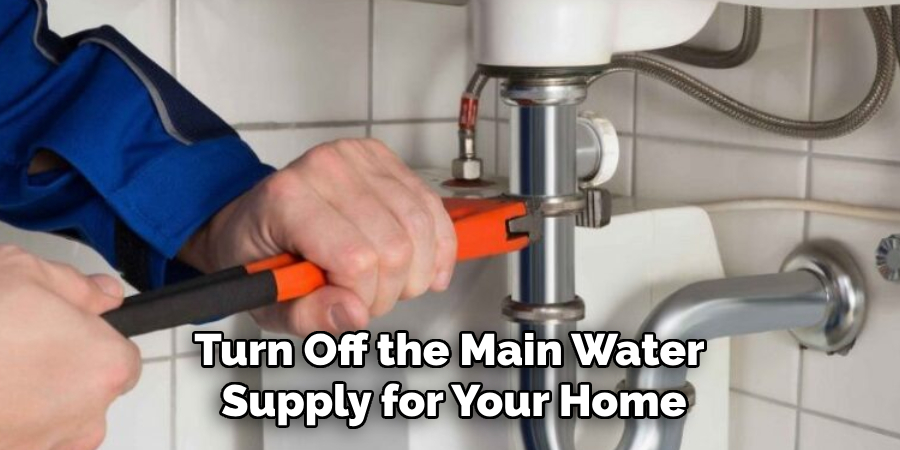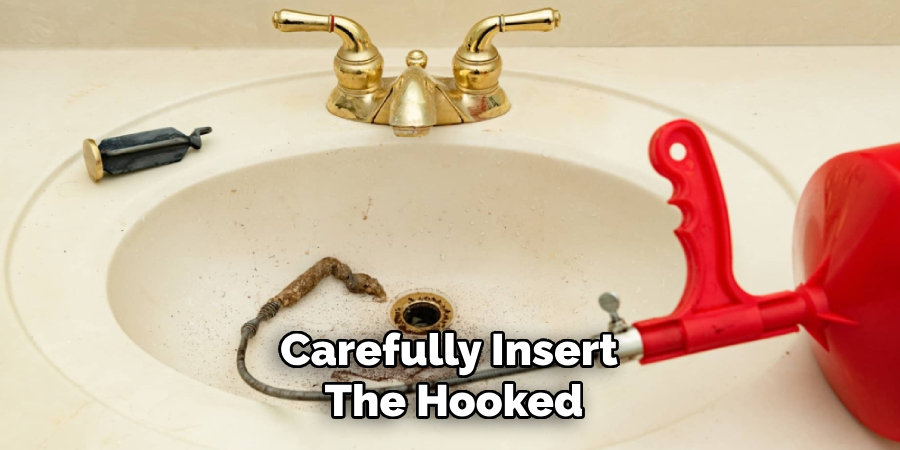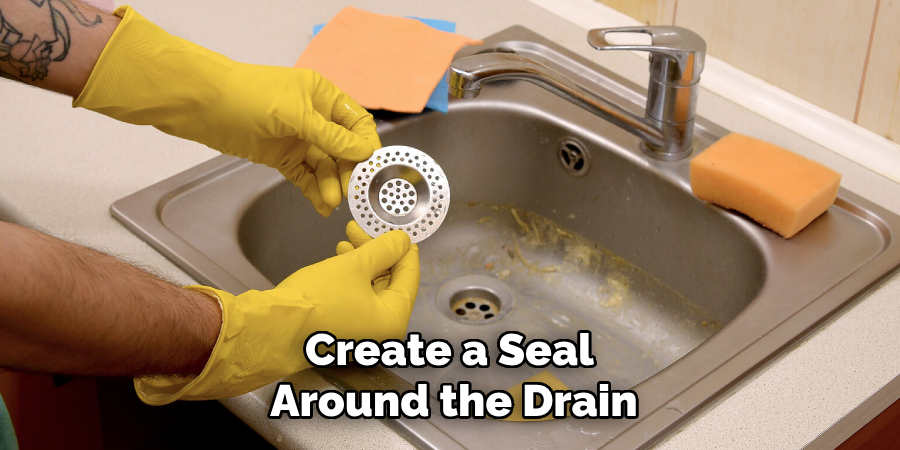Are you tired of standing in a pool of water every time you take a shower or wash your hands? A clogged bathroom sink drain can be a major nuisance, but luckily, it’s often an easy fix.
Losing a small item down the bathroom sink drain can be a frustrating experience, but fortunately, there are several methods you can try to retrieve it. Whether it’s a piece of jewelry, a contact lens, or a small tool, taking the right steps can often save you from having to call a plumber. This guide will walk you through the process of how to get something out of a bathroom sink drain by using a variety of household tools and techniques.

With a bit of patience and the right approach, you can often recover the lost item yourself without damaging your plumbing.
What Will You Need?
To retrieve a lost item from your bathroom sink drain, you will need the following items:
- A flashlight
- Tweezers or needle-nose pliers
- A wire hanger or plumbing snake
- Rubber gloves (optional)
- Bucket or container
- Vinegar and baking soda (optional)
It’s always a good idea to have these items on hand in case of future clogs as well.
10 Easy Steps on How to Get Something Out of a Bathroom Sink Drain
Step 1. Turn off the Water Supply:
Before beginning any retrieval process, it’s crucial to turn off the sink’s water supply. This precautionary measure will prevent any accidental water flow that could push the lost item further into the drain or cause a minor flood. The shut-off valves are typically under the sink; simply turn them clockwise to close. If your sink does not have individual shut-off valves, you may need to turn off the main water supply for your home.

Step 2. Clear Out the Area Under the Sink:
Remove any items stored under the sink to access the plumbing easily. Place a bucket or container under the sink to catch any water that might spill out when you open the pipes. This ensures that your work area stays clean and dry while preventing potential water damage.
Step 3. Use a Flashlight to Look Down the Drain:
Shine a flashlight directly into the sink drain for a clear interior view. If the lost item is visible and not too far down the pipe, this will help you identify its location. Move the flashlight around to illuminate different angles, paying close attention to any glimmers or shapes that might indicate the presence of the trapped object. If you can see the item and it’s within reach, proceed to the next step; otherwise, you might need to use a tool to retrieve it.
Step 4. Use Tweezers or Needle-Nose Pliers:
If the object is visible and within a few inches of the drain opening, carefully insert a pair of tweezers or needle-nose pliers into the drain. Gently grasp the item and slowly pull it out, taking care not to push it further down or damage the surrounding pipes. It may require a steady hand and some patience, especially for small or slippery items.
Step 5. Create a Hook with a Wire Hanger:
If the item is out of reach of the tweezers or pliers, you can fashion a simple retrieval tool using a wire hanger. Straighten the wire hanger and bend one end into a small hook shape. Carefully insert the hooked end into the drain and attempt to catch the item. Twist and maneuver the hanger gently to snag the object and pull it back up. This method benefits lightweight or irregularly shaped items that pliers may not quickly grasp.

Step 6. Use a Plumbing Snake:
A plumbing snake or auger can be an effective tool for objects that are further down the drain. Insert the snake into the drain and slowly feed it while rotating the handle. Continue pushing and turning the snake until you feel resistance or see the item starting to move toward the drain opening. Once you have hooked the object, carefully retract the snake, ensuring the item stays secured on the end.
Step 7. Remove the P-Trap:
If the object cannot be retrieved with the above methods, you may need to remove the P-trap, the U-shaped pipe under the sink. Place a bucket under the trap to catch any water. Use a wrench to loosen the slip nuts on both ends of the P-trap. Once the nuts are loosened, carefully remove the trap and inspect it for the lost item. If the item is not in the trap, it may still be further along the pipe system.
Step 8. Clean the P-Trap and Pipes:
While the P-trap is removed, clean it and the connecting pipes. Rinse the P-trap with water and use an old toothbrush or bottle brush to remove debris buildup. This will improve drainage flow and help you find the lost item if it is stuck among the debris.

Step 9. Reassemble the P-Trap:
Once you’ve retrieved the lost item, reassemble the P-trap by aligning it with the pipe fittings. Tighten the slip nuts by hand, then use a wrench to ensure they are securely fastened. Turn on the water supply and run the tap to check for leaks. If everything is secure and the sink drains correctly, proceed to the final step.
Step 10. Flush the Drain with Vinegar and Baking Soda (Optional):
To ensure your drain is fully clean and to help prevent future clogs, you may choose to flush it with a mixture of vinegar and baking soda. Pour half a cup of baking soda down the drain, followed by half a cup of vinegar. Let the mixture sit for 15 minutes, then flush with hot water. This process can help break down any remaining debris and maintain a clear drain.
By following these 10 easy steps, you can safely and effectively retrieve a lost item from your bathroom sink drain without causing any damage.
5 Additional Tips and Tricks
- Use a Magnet: If the item is metal, use a strong magnet attached to a string or a flexible rod. Carefully lower it into the drain to retrieve the object without causing damage.
- Try a Bent Wire Hanger: Straighten out a wire hanger, but leave a small hook at the end. Insert it into the drain and try to catch the item with the hook. Be gentle to avoid scratching or damaging the pipes.
- Plunger Method: Using a small sink plunger, create a seal around the drain and plunge gently. This can sometimes generate enough suction to dislodge the object and bring it closer to the surface.
- Wet/Dry Vacuum: If you have access to a wet/dry vacuum, set it to liquid mode, cover the end of the hose with a small mesh or thin cloth to prevent the item from getting sucked into the vacuum directly. Start the vacuum and place the hose over the drain; it might suck the item up.
- Check for Traps: Some drains have a trap, a curved section of pipe located under the drain. This can be opened and checked for the item. If you need help opening it, consult with a plumber or refer to online resources for guidance.

5 Things You Should Avoid
- Using Harsh Chemicals: Avoid pouring harsh chemicals down the drain. If not handled correctly, they can damage your pipes and potentially injure you. These chemicals might also fail to retrieve the object and cause further complications.
- Forcing Objects Down the Drain: Shoving sticks, rods, or other rigid objects into the drain can cause scratches, clogs, or even break the pipes. Be gentle with any tools you insert.
- Ignoring Safety Precautions: Failing to turn off the water supply before starting your retrieval attempt can lead to unexpected water flow and potential flooding. Always ensure the area is safe and dry before retrieving the object.
- Disassembling Pipes Without Proper Knowledge: Disassembling the plumbing without understanding your sink’s configuration can lead to leaks or improper reassembly. If you need more clarification, consulting a professional is the best action.
- Using Unfit Vacuum Cleaners: Don’t use a regular household vacuum cleaner instead of a wet/dry vacuum. Regular vacuums are not designed to handle liquid and can be damaged or pose a safety hazard if used to suck up water from the drain.
Conclusion
Retrieving an item from a bathroom sink drain can be daunting, yet with the right approach and tools, it is achievable without causing damage. Methods such as a magnet, bent wire hanger, or plunger can help gently extract the object. A wet/dry vacuum or checking the trap might be necessary for more stubborn cases.
Avoid using harsh chemicals, forcing objects down the drain, neglecting safety precautions, disassembling pipes carelessly, or using inappropriate vacuum cleaners. By following these tips and being cautious, you can successfully recover your lost item while maintaining the integrity of your sink’s plumbing.
Hopefully, this guide on how to get something out of a bathroom sink drain has been helpful in navigating the process of retrieving objects from a bathroom sink drain. So, the next time you drop something down the drain, don’t panic and remember these tips to recover it safely. Happy sink diving!